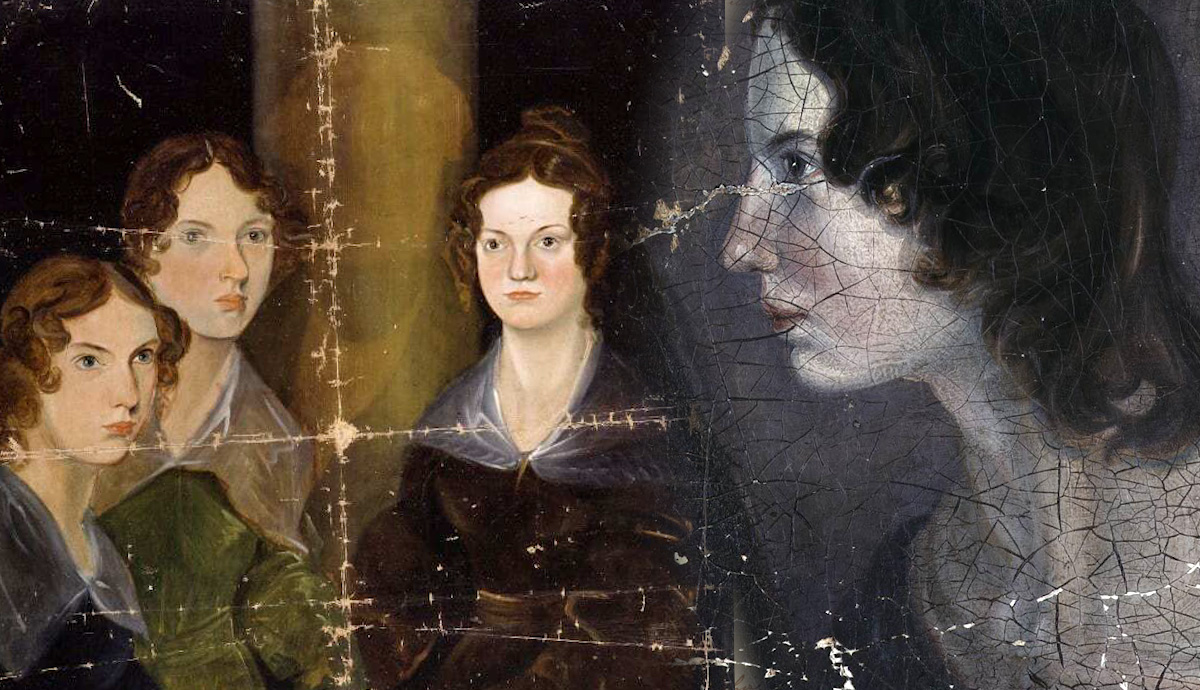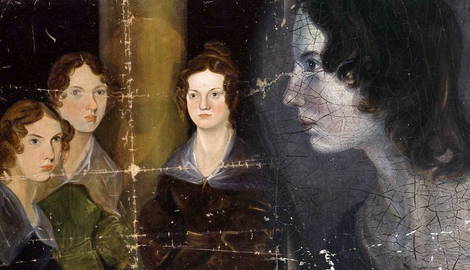
Emily, Charlotte, and Anne Bronte are three of the most famous women writers of all time. Responsible for penning such masterpieces as Wuthering Heights and Jane Eyre, their powerful, emotional stories shocked Victorian readers but have stood the test of time. Famously, none of the three would live to see age 40.
Here are 10 tragic and surprising facts about the entire Bronte family.
1. Maria Bronte’s Last Words before Death Were, “Oh God, My Poor Children!”

The matriarch of the Bronte family wasted away slowly following the birth of her sixth and final child, Anne. Historians have long suspected her excruciating cause of death to have been either uterine cancer or a lingering postpartum infection. At the time of Maria’s death in 1821, her six children were all under the age of eight.
Her husband Patrick, a clergyman, would later write that he was “left quite alone, unless you suppose my six little children and the nurse and servants to have been company.” Shortly thereafter, Maria’s sister Elizabeth would move into the Bronte family home to help raise and educate the children. She would stay at Haworth until her death in 1842.
2. The Eldest Two Bronte Sisters Died of Consumption Due to Poor Boarding School Conditions

In 1824, the four eldest Bronte girls (Maria, Elizabeth, Charlotte, and Emily) were sent away to be educated at Clergy Daughters School at Cowan Bridge in Lancashire. Anne was not yet old enough to attend school, and Branwell, the only male child of the Bronte family, was to be educated at home.
Conditions at Cowan Bridge were dismal: cold, damp, and unhygienic. Within a year, a typhoid epidemic ripped through the school. Maria and Elizabeth came down with consumption (tuberculosis) soon after and were sent home. They never recovered, dying within weeks of each other.
Charlotte and Emily did not return to Cowan Bridge after the deaths of their sisters. Charlotte would later use her brief experience there as inspiration for Lowood, the harsh boarding school attended by her titular protagonist in Jane Eyre.
3. Charlotte Bronte Turned Down Multiple Marriage Proposals (& Was Obsessed with Her Former Professor)

The first proposal came from Henry Nussey, the brother of Charlotte’s friend Ellen, in 1839. In a letter to Ellen explaining her refusal, Charlotte wrote:
“I asked myself two questions – ‘Do I love Henry Nussey as much as a woman ought to love her husband? Am I the person best qualified to make him happy?’ Alas Ellen my Conscience answered no to both these questions.”
The rejected proposal did not cause ill will. Henry went on to marry another woman, and Charlotte and Ellen remained life-long friends and confidantes.

The second proposal came from David Pryce, a former curate of Charlotte’s father, later that same year. Her refusal may have prevented some amount of future heartache; David Pryce died just one year later.
In 1842 and 1843, Emily and Charlotte attended a French language school in Brussels, hoping to establish their own school in the future. This plan never came to fruition, but Charlotte returned home to England with something else to hold onto – an obsession with her professor, Constantin Heger.
Charlotte wrote him increasingly desperate, emotional letters between 1844 and 1845, begging him to respond. She claimed she could not sleep without being tormented by dreams of him and “would rather undergo the greatest bodily pains” than lose her “master’s” friendship and interest.
After requesting that Charlotte stop writing, Heger tore the letters into pieces. His wife reportedly retrieved and mended the letters; the Heger family donated them to the British Library in 1913. Charlotte’s novel Villette is a barely-veiled retelling of this time in her life.
Charlotte’s final suitor came nearly a decade later (three years after her well-documented visit to the Great International Exhibition in London) – Arthur Bell Nicholls, another of her father’s curates. Charlotte turned down his first proposal, but over the course of the following year, Nicholls wore her down. The two were married in 1854.
4. Wuthering Heights Was Widely Despised Upon Publication

Critics called the story strange, confused, vulgar, and disagreeable, urging readers to “read Jane Eyre… but burn Wuthering Heights.”
Graham’s Lady Magazine published an anonymous review expressing surprise that the author had written the gothic novel “without committing suicide before he had finished a dozen chapters” and calling it “a compound of vulgar depravity and unnatural horrors.”
The North British Review wrote, “the only consolation which we have in reflecting upon it is that it will never be generally read.”
Only a select few saw the appeal of Emily Bronte’s novel. An anonymous review published in Douglass Jerrold’s Weekly Newspaper called it “impossible to begin and not finish it” and promised readers “they never have read anything like it before.”
5. Anne Bronte Once Tied Two Children to a Table

Anne Bronte’s book Agnes Grey was published in 1847. The book centers on the titular character’s experience as a governess to a family of unruly, spoiled, and cruel children.
Critics blasted the novel for being over-exaggerated and the children’s behavior beyond belief. Anne later publicly lamented that she had been “accused of extravagant over-coloring in those very parts that were carefully copied from the life, with a most scrupulous avoidance of all exaggeration.”
Anne had indeed worked as a governess in the past. The children in Agnes Grey have been unfavorably compared to those of the Ingham family, whom she cared for in 1839. Mrs. Ingham later recounted that she “had once employed a very unsuitable governess called Miss Bronte who had actually tied the two children to a table leg in order to get on with her own writing.”
6. Emily Bronte’s Coffin Was Only 16 Inches Wide

Branwell Bronte died in 1848 at the age of 31. His cause of death was listed as marasmus, a form of severe malnutrition. He was known to suffer from alcohol and opium addiction at the time.
Emily Bronte caught cold at her brother’s funeral in September and was dead from tuberculosis before the year was out. She had grown so thin that her coffin, while long enough to accommodate her 5’7” frame, was a mere 16 inches wide. Emily elected not to be treated for her illness.
Emily died almost exactly one year after the publication of her only novel, Wuthering Heights. Her sister Anne would also succumb to tuberculosis just six months later, leaving Charlotte as the last surviving child in the Bronte family.
7. Charlotte Bronte Died of Morning Sickness

Charlotte Bronte died on March 31, 1855, just nine months following her marriage at the age of 38. While her death certificate lists tuberculosis as her cause of death, modern evaluation of her symptoms has led to widespread acceptance that she actually died from hyperemesis gravidarum, an extreme manifestation of morning sickness during pregnancy.
Hyperemesis gravidarum leaves women unable to keep food or liquid down and causes severe dehydration and malnutrition. Charlotte experienced all of these symptoms in the months prior to her death.
Her final book, The Professor (an earlier version of her 1853 novel Villette), was published posthumously by her husband in 1857.
8. Branwell Bronte Probably Had No Idea His Sisters Were Authors

As was the case for Jane Austen, all of the Bronte novels were originally published under pseudonyms: Currer (Charlotte), Ellis (Emily), and Acton (Anne) Bell. Though he doubtlessly saw them writing ceaselessly, Branwell likely died ignorant of his sisters’ success.
By 1847 (the publication year for Jane Eyre, Agnes Gray, and Wuthering Heights), Branwell was so out of control due to alcohol and opium addiction that he had to share a bedroom with his father. Charlotte described Branwell during this period as “an impediment to all happiness.”
It was Charlotte, too, who would eventually reveal the true identities of the Bronte sisters in a preface to the second edition of Wuthering Heights in 1850.
9. The Brontes May Have Been Poisoned by Graveyard Drinking Water

In 1849, Patrick Bronte expressed concern over sanitation in the hilltop graveyard that he oversaw, very near to the Bronte family parsonage. The next year, an investigation was carried out, which resulted in a number of shocking revelations.
The report stated that the Haworth churchyard was “so full of graves that no more interments in it should be allowed” and that because there was no sewer system in place “to carry off refuse and decomposing matter,” the town’s meager water supply was not safe to drink, especially in the summer. The report also found that the average life expectancy in Haworth was under 26 years, with 42.6% of children dying before the age of six.
The presence of so much bacteria in the water may well have contributed to the weakened immune systems, chronic illnesses, and early deaths of the Bronte family.
10. Patrick Bronte Outlived His Wife & All Six of His Children

Patrick Bronte died on June 7th, 1861 at the age of 84. He was preceded in death by his wife, Maria, his five daughters (Maria, Elizabeth, Emily, Anne, and Charlotte), and his son, Branwell.
Patrick, an Irish-born Anglican priest, was the eldest of 10 children and himself a published author of poetry in his early life. He never remarried after the death of his wife and served the town of Haworth for over 40 years.










